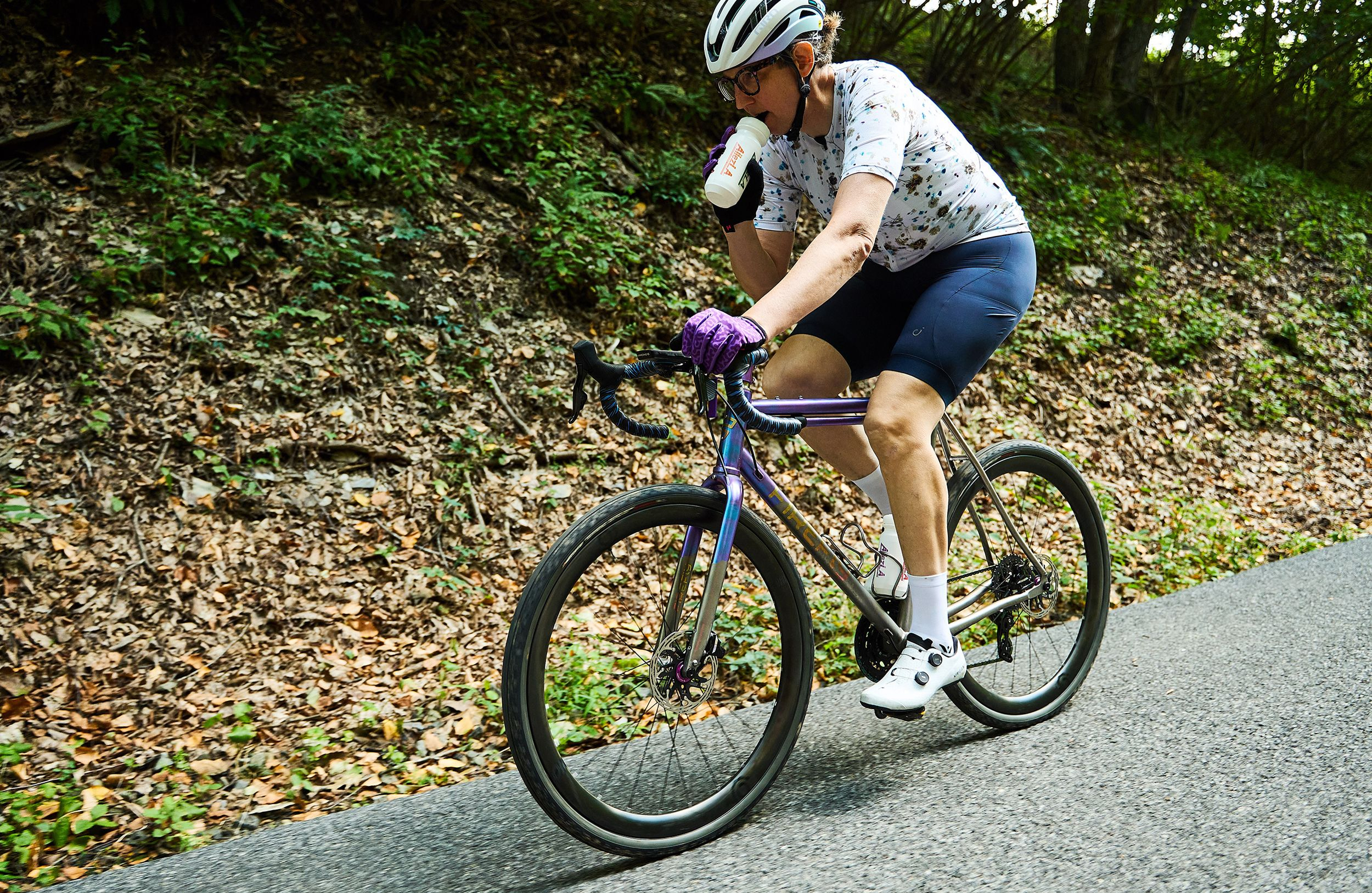

Picture this: you're 50 miles into a countryside ride, relying on your phone's dying battery for navigation, when suddenly—the screen goes black. No route. No speed data. Just you, a maze of unfamiliar lanes, and fading daylight. 🚨 I've been there—frantically squinting at vague road signs, wasting precious energy on wrong turns, all because I underestimated the value of a proper cycling computer.
Modern cycling isn't just about legs and lungs; it's about data-driven precision. Whether you're training for a Gran Fondo or exploring new trails, a dedicated cycling computer transforms chaos into control. Unlike smartphones, these rugged devices offer weatherproof reliability, satellite-grade navigation, and real-time performance metrics—without draining your phone battery.
But here's the rub: not all cycling computers are equal. Some lag during route recalculations, others have unreadable screens in sunlight, and budget models often omit critical sensors like ANT+ connectivity. After testing 15 models this year, I've seen how poor choices lead to missed intervals, navigation fails, and even safety risks.
The best units—like our top-ranked RidelyVo CC600—deliver 5-second GPS locks, 🚀 WiFi sync, and colourful turn-by-turn guidance. They're your digital co-pilot, tracking everything from elevation gain to power output while surviving crashes and downpours. 💪
Ready to ditch the guesswork? Below, I break down the 5 best cycling computers of 2025 using strict evaluation criteria—so you can ride smarter, not harder.
Assesses GPS accuracy, re-routing speed, map clarity, and turn alerts under real-world conditions like tree cover or urban canyons.
Evaluates screen layouts, metrics tracked (e.g., power, cadence), and compatibility with third-party sensors via ANT+/Bluetooth.
Tests screen visibility in direct sunlight, waterproof rating (IPX7+ ideal), and scratch resistance of display glass.
Measures WiFi/Bluetooth sync speeds, smartphone integration, and battery life during continuous navigation (15+ hours preferred).
The RidelyVo Cycling Computer redefines the cycling experience with its cutting-edge features and robust design. Its 2.4” colourful screen, protected by high-strength Asahi glass, ensures durability and clarity, even in harsh conditions. 🚴♂️ The navigation system stands out with turn reminders and GPX file support, making it a reliable companion for both casual riders and serious cyclists.
One of the standout features is the graphic data fields, offering extensive customisation with 10 pages, 29 display layouts, and 108 supported data items. This allows cyclists to tailor their display to match their training needs perfectly. The WiFi & Bluetooth transmission ensures seamless connectivity, freeing you from the hassle of manual syncing. 🔄
The 5-second positioning capability, supported by multiple satellite systems, ensures you’re always on track. Whether you’re navigating city streets or remote trails, the RidelyVo Cycling Computer keeps you informed and in control. Its indoor training support is a game-changer, allowing you to focus on performance without external distractions. 🏆
With support for 11 languages and compatibility with third-party platforms like STRAVA, this device is truly global. The Bluetooth and ANT+ protocols enable connections with up to 8 types of devices, enhancing its versatility. Whether you’re a beginner or a pro, the RidelyVo Cycling Computer delivers unmatched performance and convenience. 🌍
The RidelyVo Cycling Computer is the top choice for cyclists seeking innovation and reliability. Its advanced features, durable design, and seamless connectivity make it a standout. However, its popularity means it’s often out of stock, so act fast to secure yours! 🚀
The Bryton Rider S500 stands out as a top-tier cycling computer designed for adventurous cyclists who demand reliability and advanced features. Its colour touchscreen and intuitive graphical interface make navigation effortless, even during intense rides.
One of its standout features is the ambient light sensor, which automatically adjusts screen brightness to suit changing conditions. This ensures optimal visibility whether you're cycling at dawn, dusk, or under bright sunlight.
With a 24+ hour battery life, the Rider S500 is perfect for long-distance cyclists and endurance riders. The battery optimisation keeps the device lightweight without compromising performance, making it ideal for all-day adventures.
The device excels in versatility, offering cutting-edge E-Bike support and robust off-road capabilities. Whether you're tackling mountain trails or urban commutes, the Rider S500 adapts seamlessly to your needs.
Overall, the Bryton Rider S500 is a highly recommended choice for cyclists seeking a durable, feature-packed computer that enhances every ride with precision and ease.
The SRAM Karoo cycling computer combines smartphone-like functionality with rugged durability, making it a favourite among tech-savvy cyclists. Its industry-leading display offers vibrant visualisations of ride data and maps.
With 64GB of memory and 4GB RAM, the Karoo delivers lightning-fast performance, reducing wait times for map rendering and data processing. This allows cyclists to focus more on riding and less on device lag.
The multi-band GNSS technology ensures unparalleled accuracy, whether navigating crowded city streets or remote trails. This feature is particularly useful for cyclists who explore diverse terrains.
Hardware buttons complement the responsive touchscreen, providing easy control in all conditions. Whether wearing gloves or riding in rain, the Karoo remains accessible and reliable.
While the SRAM Karoo excels in performance and navigation, its premium features come at a higher cost, positioning it as a top choice for serious cyclists who prioritise technology and precision.
The Garmin Edge 540 is a powerhouse cycling computer trusted by professionals and enthusiasts alike. Its 26-hour battery life ensures it can handle even the longest rides without needing a recharge.
Equipped with multi-frequency reception, the Edge 540 delivers high-precision route recordings, making it ideal for cyclists who demand accuracy. This feature is particularly beneficial for competitive riders and route planners.
The device includes pre-installed maps for Central and Western Europe, with options to download additional regions. Navigation is seamless, with turn-by-turn guidance and climb details to optimise performance.
Smart notifications keep cyclists connected without distractions, displaying calls, messages, and weather updates directly on the screen. Integration with apps like Komoot and Strava enhances its versatility for training and exploration.
While the Garmin Edge 540 excels in functionality, its interface can be complex for beginners. However, for those willing to learn, it offers unmatched features and reliability.
The AROFLY i-ELITE cycling computer is a unique entry in our top 5, offering a built-in power meter for serious athletes. Its lightweight design, at under 2.83 ounces, ensures it doesn’t add unnecessary bulk to your bike.
The 2.5-inch display features ambient lighting and switchable modes, allowing cyclists to focus on speed, power output, or other critical metrics. This adaptability makes it suitable for both training and competition.
Using pneumatic modules and a proprietary algorithm, the i-ELITE measures power output with impressive accuracy. This wind-based system provides detailed feedback on performance, helping riders optimise their efforts.
Installation is tool-free and takes under 10 minutes, making it accessible for cyclists of all skill levels. The included cadence sensor enhances data accuracy, though it’s only compatible with the i-ELITE system.
While the AROFLY i-ELITE offers innovative features, its limited compatibility with third-party sensors and apps may deter some users. However, for those focused on precise power metrics, it’s a compelling option.
A cycling computer is a specialised electronic device designed to track and display performance metrics during rides. These compact gadgets mount onto your bike's handlebars, providing real-time data to enhance training and navigation.
Modern cycling computers go beyond basic speed and distance tracking. Advanced models integrate GPS, heart rate monitoring, and power meter compatibility to offer comprehensive performance analysis.
The primary purpose of these devices is to optimise cycling performance through accurate data collection. Riders can monitor progress, set training goals, and analyse routes with precision.
High-end GPS cycling computers often feature detailed mapping capabilities and wireless connectivity. This allows for route planning, live tracking, and seamless integration with fitness platforms.
Whether you're a casual rider or competitive cyclist, a quality cycling computer provides invaluable insights to improve your riding experience and training outcomes.

© 2023 BestPickReviews, LLC. All Rights Reserved.
Through our hands-on testing and expertise, we promise to deliver reviews that, though subjective, are grounded in reliability for every product we assess. Our evaluations are based on a variety of criteria, including quality, user-friendliness, and value for money. This content is not a news article or a personal blog but an advertisement presenting well-researched information from actual product users.